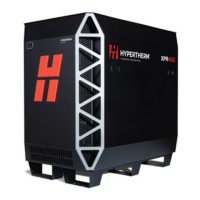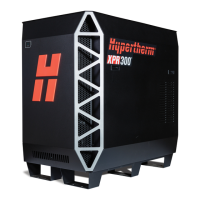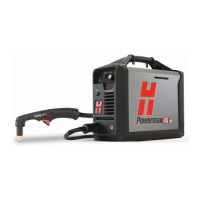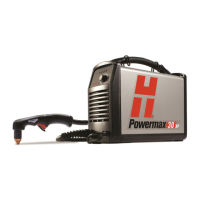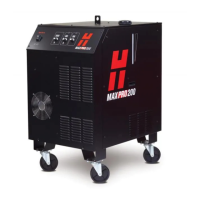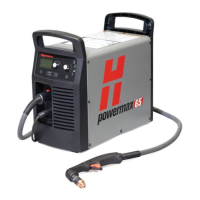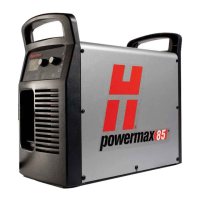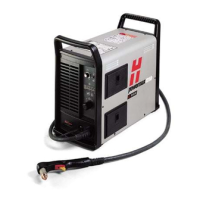Operation
XPR300 Instruction Manual 809480 215
Automatic purges
XPR cutting system purges are automatic. The type of purge is based on the currently-selected
process, the previously-selected process, and on the type of gas connect console (OptiMix, VWI, or
Core).
OptiMix and VWI XPR cutting systems do both gas-change and process-setup purges.
Refer to Gas-change purges for OptiMix or VWI XPR cutting systems on page 215 and
Process-setup purges for all XPR cutting systems on page 216.
Core XPR cutting systems do only process-setup purges. Refer to Process-setup purges
for all XPR cutting systems on page 216.
The length of time necessary to complete a purge is based on the type of
operator-selected process and if the active process is the first process
sent after the Powerup State (1). Refer to Sequence of operation on
page 207.
Gas-change purges for OptiMix or VWI XPR cutting systems
If you have an XPR cutting system equipped with an OptiMix or VWI gas connect console, a
plasma-gas purge occurs automatically when the cutting system changes from a non mixed-fuel
gas process to a mixed-fuel gas (H
2
-mix) or F5 process or from a mixed-fuel gas (H
2
-mix) or F5 to a
non mixed-fuel gas process.
Core XPR cutting systems skip gas-change purges.
The type of plasma gas used for the purge is based on the type of cutting system configuration
(OptiMix or VWI):
OptiMix XPR cutting systems use a 2-phase gas-change purge that includes N
2
.
VWI XPR cutting systems use a 2-phase gas-change purge that includes air.
Plasma-gas purge
The following steps occur automatically for a plasma-gas purge:
1. Mixed-fuel gas (H
2
-mix) or F5 drains from the XPR cutting system through the torch.
2. If you have an OptiMix XPR cutting system, N
2
purges any residual mixed-fuel gas.
3. If you have a VWI XPR cutting system, air purges any residual F5 gas from the torch lead.
Shield-gas/shield-fluid purge
If a process changes from a wet process to a dry process, a shield-fluid purge is used. During a
shield-fluid purge, N
2
purges residual water from the shield gas/fluid hose.
A wet process uses water as a shield fluid. A dry process does not use
water as a shield fluid.
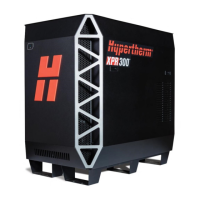
